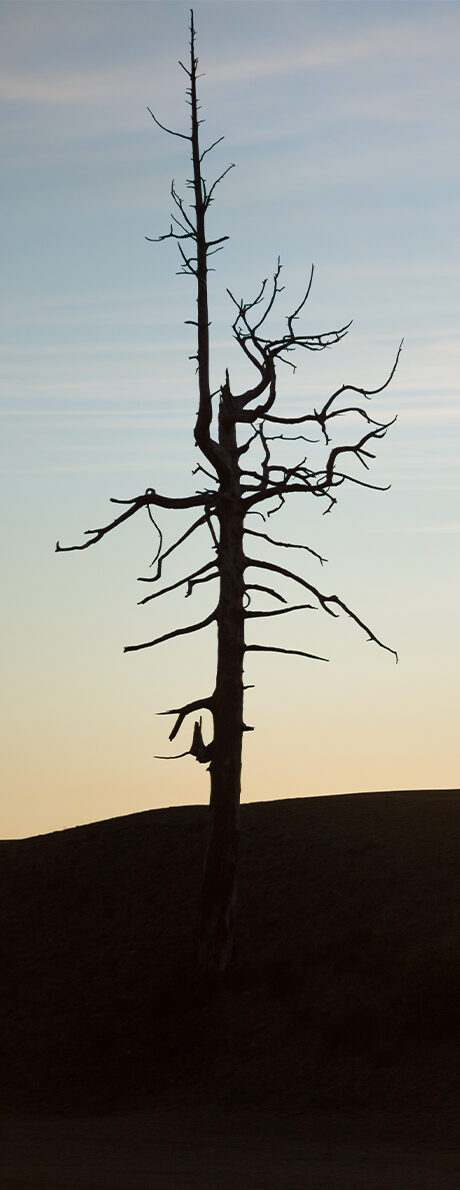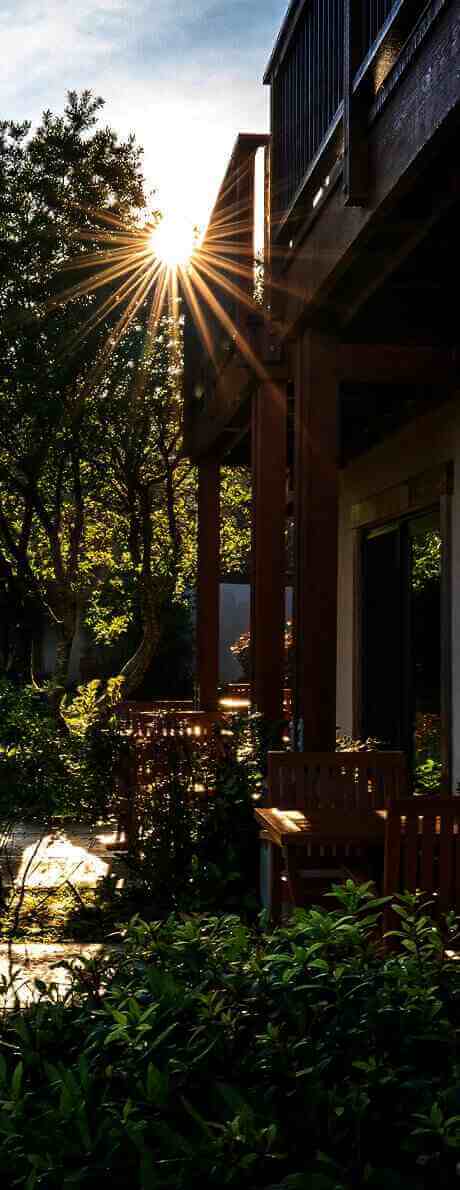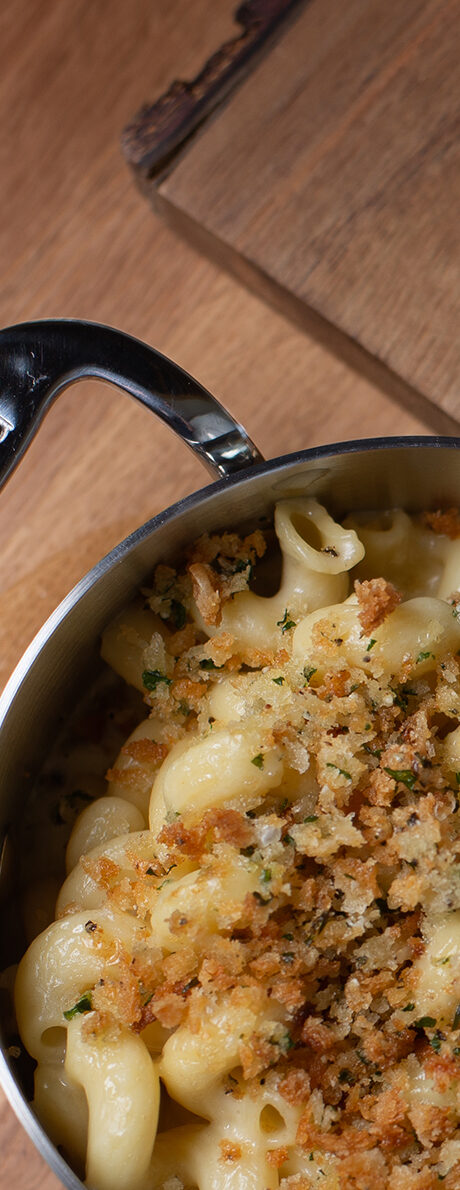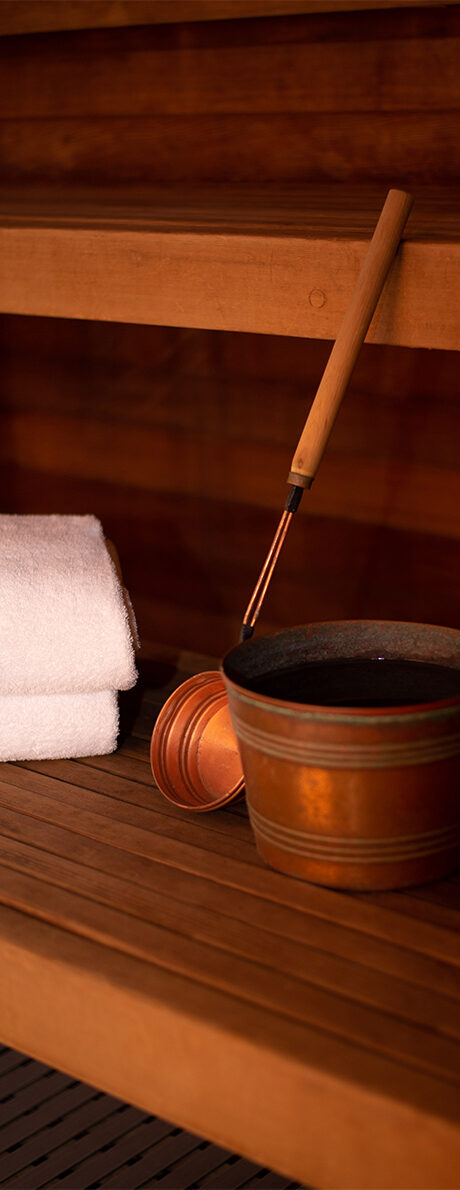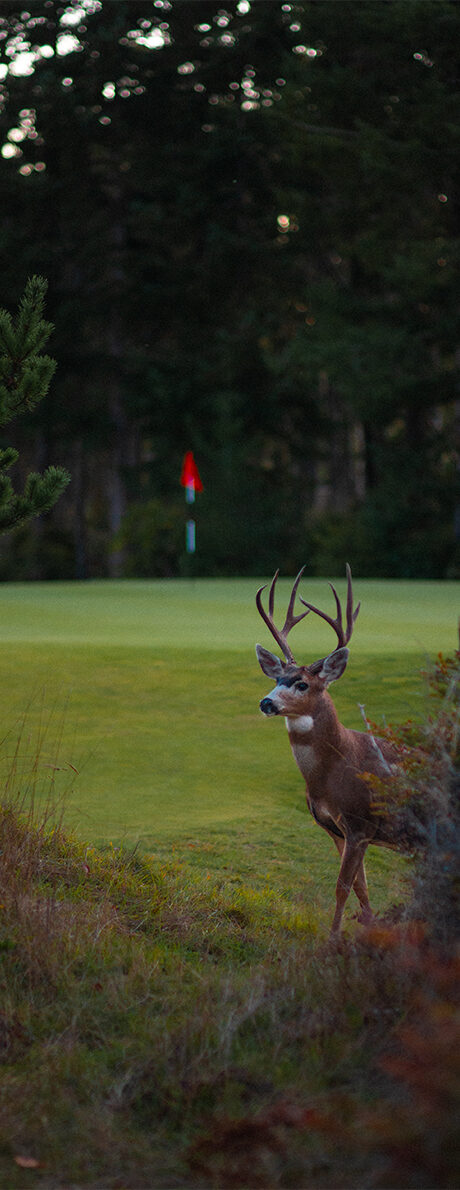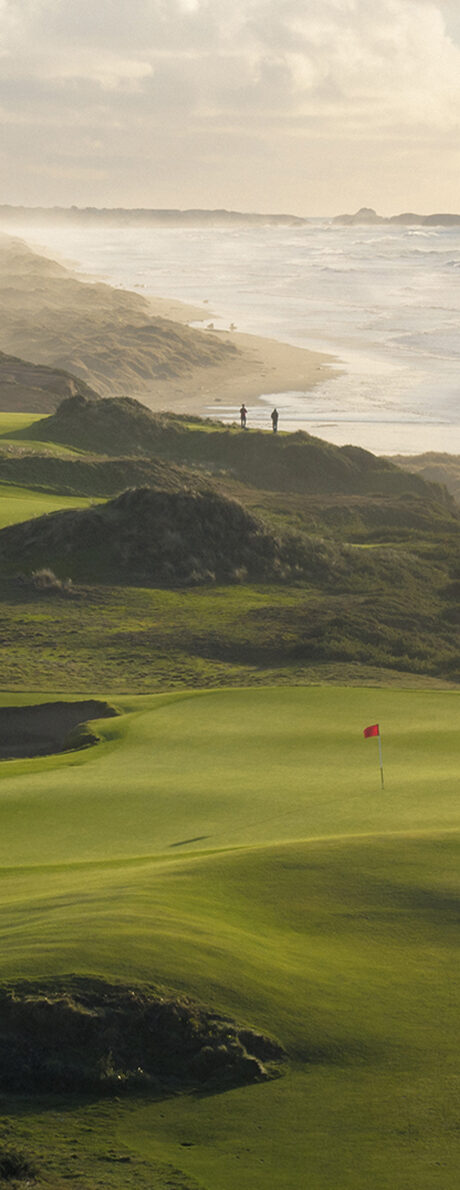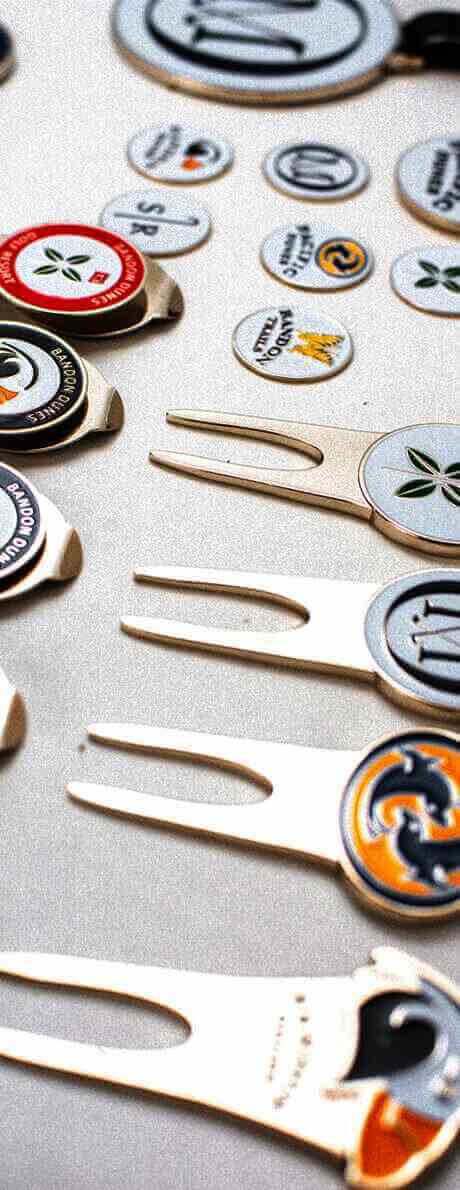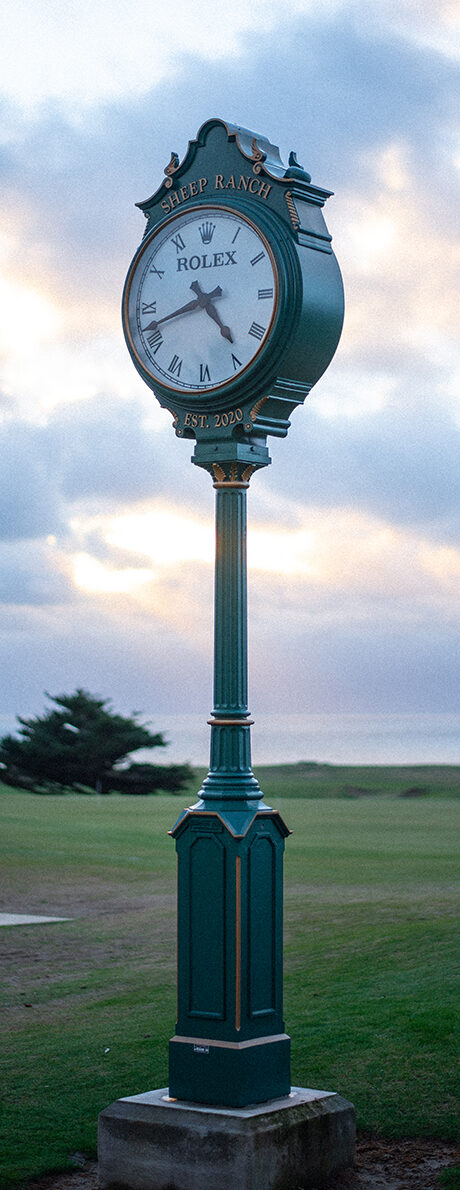The Nature of Bandon Dunes
From the moment Mike Keiser, founder and land steward of Bandon Dunes Golf Resort, first stepped on the property he was struck by the beauty of the Southern Oregon Coast. He and Howard McKee made it their mission to preserve the natural glory and ruggedness of the land, creating an undeniable connection between nature and those who have walked the resort’s grounds.
Over twenty years later, we continue to build on that same vision. The nature of Bandon shines in multiple environmental initiatives that often go unnoticed, meant to blend into the natural surrounds and resort experience as a whole. Various wildlife habitat programs, energy-focused building improvements, as well as responsible water usage measures that led to environmental certifications and awards, are outlined below. Each goal provides a new stepping stone in furthering our commitment toward protecting the environment. To learn more about the resort's latest goal to reduce plastic waste click here.
Environment & Habitat
Audubon International Sanctuary Status
Five of the six courses at Bandon Dunes Golf Resort have achieved their designation as a Certified Audubon Cooperative Sanctuary through Audubon International. The Sheep Ranch has taken steps to achieve certification within 24-months of opening. As part of our certification, the Agronomy department has installed an estimated 65 bird boxes throughout the resort and cataloged over 120 confirmed bird species sightings.
Wildlife Habitat
The 2,525-acre resort has a minimal building footprint and an estimated 1,500 acres of unmanaged land. The vast majority of vegetation on the resort is native plant material growing in a natural state. A little-known fact is the resort has a conservation area called the H.L. McKee Preserve. The 250-acre conservation area has 13 different natural resource communities, one of which is Silvery Phacelia (Phacelia Argentea) designated as a threatened plant species by the State of Oregon and species of concern federally.
Silvery Phacelia
Unless you're a botanist, Silvery Phacelia probably sounds more familiar from your time playing the Bandon Preserve, where it is celebrated as the course logo. Over the years, our team has fostered more Silvery Phacelia habitats and increased the plant number on property from 6,115 in 2014 to 32,570 in 2020.
Bat Population
Bats play a very important role in controlling insect populations on the southern coast of Oregon. In order to help increase bat populations in our area, 10 bat houses have been installed throughout Bandon Dunes' property.
Fertilizer Usage
Due to the low fertility requirements of our fescue turfgrass, we apply fertilizer on an as-needed basis. The majority of our fertilizer applications are applied as a foliar and at very small rates using the spoon-feed approach. In doing so we eliminate potential for run-off or leaching. If needed, we use organic sources as part of our fertility program which is slow release by nature as well as mini-prilled ammoniacal fertilizers applied at low rates to reduce the potential for runoff and avoiding excessive growth.
Energy Efficiency Initiatives
Reducing our Carbon Footprint
Through the efforts of our energy provider, Coos/Curry Electric Coop, the resort's energy supply is on average more than 85% renewable and 95.2% carbon-free. The addition of solar panels across the property has gotten us even closer to being fully carbon neutral!
Solar Panels
The resort has embarked on a program to continue adding solar panels to our energy grid. So far, there have been five arrays installed throughout the property composed of 188 panels. The amount of power produced through the solar arrays equates to an average of 9,525 kWh per month. The U.S. Energy Information Administration states that in 2019 the monthly electricity consumption for a U.S. residential utility customer was an average of 877 kilowatt-hours (kWh) per month. Thus the power produced from the solar arrays on property offsets over 10 residential utility consumers.
LED Lighting
In addition to producing energy, we are also exploring other avenues to increase energy efficiency at the resort. The U.S. Department of Energy states that the “widespread use of LED lighting has the greatest potential impact on energy savings in the United States.” With this in mind, we have taken on the task of converting all lighting at the resort to energy-efficient LED lights. As of March 2021, approximately 50% of all lights on property have been replaced with LEDs. Our goal is to have a total conversion to LED lighting.
On-Demand Water Heaters
Another energy transition initiative currently in progress is converting from conventional storage water heaters to on-demand water heaters. On-demand water heaters only initiate when the faucet or shower is being utilized. The transition is estimated to decrease the percentage of fuel needed to run each unit by 30-40% and a 10-15% decrease in electrical usage. In addition to using less fuel and electricity to operate, on-demand water heaters have a 98% efficiency rate compared to the 60-70% efficiency rate of the traditional systems. Currently, all 16 Grove Cottages have transitioned from conventional water heaters to on-demand water heaters as well as all four Agronomy centers. The 26 Chrome Lake conventional units are next on the list!
Electric Equipment Transition
Our Agronomy department is currently utilizing electric chainsaws, blowers, and string trimmers and is focused on transitioning from 2-stroke handheld powered equipment to electric battery-powered units as equipment wears out. The end goal is to replace all 2-stroke handheld power equipment with battery-powered units.
Tubular Daylighting Devices
Tubular Daylighting Devices and skylights that promote the use of natural light have also been taken into consideration and installed at the resort. The Wild Rivers Center building and 68 restrooms across the property have devices to utilize the maximum amount of natural light to deter energy use. Our goal is to have these systems be standard in all future building projects.
Water Quality & Usage
Water Use for Irrigation
As mentioned above, a large percentage of the resort landscape is native plant material that requires no additional irrigation beyond the South Coast's natural resources. The property is approximately 2,525 acres with only around 600 acres irrigated. With our love for fescue turfgrass on all of our courses, we benefit from a grass type that has a lower water requirement than other cool-season grass varieties. In addition, the irrigation decisions and schedules are determined by portable moisture readings and weather readings in conjunction with irrigation software to maximize efficiency.
Water Recycling
Having our own wastewater recycling system allows the resort to process and treat its own wastewater which is utilized in our irrigation system. With an average of 40,000-50,000 gallons of water being recycled daily during our peak season, this helps to reduce the amount of well water used for irrigation.
Water Quality
The resort achieved our Groundwater Guardian Green Site designation for the first time in 2016. In the Green Site evaluation, the resort scored 94.9%, well above the minimum 70% grade required for the designation.
Water-less Urinals
Bandon Dunes is also currently implementing more waterless urinals. Urinal output is normally around 2.5 gallons per flush. So far eight waterless urinals have been installed at Bandon Dunes and have reduced the annual water use for the Resort by an estimated 128,000 gallons. The goal is to have these systems be standard in all future buildings.
What else has been happening on the environmental front?
Bandon Preserve, our course with a mission, has a noteworthy background. When checking in for your Preserve round, you may have heard that the net proceeds from green fees go directly to Wild Rivers Coast Alliance. WRCA is the grant-making department of Bandon Dunes Golf Resort supporting community, conservation, and economy on the South Coast of Oregon. To learn more about everything the WRCA has been able to accomplish since its creation in 2012, check out their website here!
Environmental Certifications & Awards
- 2011-Present | Audubon Cooperative Sanctuary Program, Audubon International
- 2012 | Green Star Award Winner, Golf Digest
- 2015 | Michael Hindal Environmental Award, OGCSA
- 2016 | National Resort Winner, GCSAA Environmental Leaders in Golf
- 2016 | Best Green Workplaces in Oregon, Oregon Business Magazine
- 2016 | Groundwater Guardian Green Site, The Groundwater Foundation
- 2016-Present | EPA WasterWise Partner, U.S. Environmental Protection Agency
- 2017 | Awarded Highest Green To A Tee Level IV Status, KemperSports
Stay tuned for more environmentally friendly initiatives in the coming months and years!

